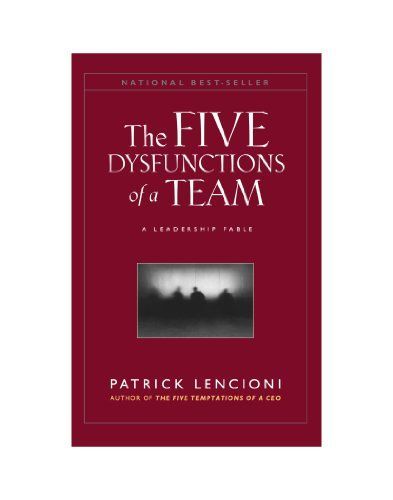
The Five Dysfunctions of a Team A Leadership Fable
In The Five Dysfunctions of a Team Patrick Lencioni once again offers a leadership fable that is as enthralling and instructive as his first two best-selling books, The Five Temptations of a CEO and The Four Obsessions of an Extraordinary Executive. This time, he turns his keen intellect and storytelling power to the fascinating, complex world of teams. Kathryn Petersen, Decision Tech's CEO, faces the ultimate leadership crisis: Uniting a team in such disarray that it threatens to bring down the entire company. Will she succeed? Will she be fired? Will the company fail? Lencioni's utterly gripping tale serves as a timeless reminder that leadership requires as much courage as it does insight. Throughout the story, Lencioni reveals the five dysfunctions which go to the very heart of why teams even the best ones-often struggle. He outlines a powerful model and actionable steps that can be used to overcome these common hurdles and build a cohesive, effective team. Just as with his other books, Lencioni has written a compelling fable with a powerful yet deceptively simple message for all those who strive to be exceptional team leaders.
Reviews
Kyra Cracchiola@kyrareads
Jeffrey Jose@jeffjose
Anthony@amorriscode
Ahmed Kamal Ali@ahmadkd
Scott Wilson@createpei
Neil Murray@neilswmurray
Danté@dantenel
Todd Luallen@tluallen
Scott Wilson@createpei
Zoe Smolen@booksatlunch
Daryl Houston@dllh
Brook@brook
Brittany Peterson@lardib
Erik Horton@erikhorton
MJ@mikejonesberlin
Rafael Burity@rafaelburity
Livie Casto@livcasto
Sandy@pdxhonzuki
Mat Connor@mconnor
Jannis M@jmm
Aimee Ardonne@aimee-a
George Penston@gpenston
Jeff Borton@loakkar
daniela@ooorangemoon
Highlights
Pamela Geil@pbwyso
Page 196
Pamela Geil@pbwyso
Page 195
Pamela Geil@pbwyso
Page 189
Pamela Geil@pbwyso
Page 43
Pamela Geil@pbwyso